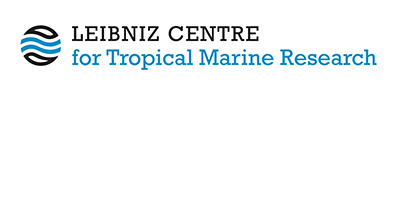The masked influence of remote ENSO-related drivers on the trophic dynamics of Independencia Bay, Peru: Insights for management from time-series analysis and food-web modelling.
Del Solar, Alonso, Romagnoni, Giovanni  ORCID: https://orcid.org/0000-0002-2208-3017 and Wolff, Matthias
ORCID: https://orcid.org/0000-0002-2208-3017 and Wolff, Matthias  ORCID: https://orcid.org/0000-0001-7458-983X
(2024)
The masked influence of remote ENSO-related drivers on the trophic dynamics of Independencia Bay, Peru: Insights for management from time-series analysis and food-web modelling.
Ocean & Coastal Management, 251
.
p. 107047.
DOI https://doi.org/10.1016/j.ocecoaman.2024.107047.
ORCID: https://orcid.org/0000-0001-7458-983X
(2024)
The masked influence of remote ENSO-related drivers on the trophic dynamics of Independencia Bay, Peru: Insights for management from time-series analysis and food-web modelling.
Ocean & Coastal Management, 251
.
p. 107047.
DOI https://doi.org/10.1016/j.ocecoaman.2024.107047.
|
Text
Del Solar2024.pdf - Published Version Available under License Creative Commons: Attribution 4.0. Download (7MB) |
Abstract
Independencia Bay is a very productive ecosystem in central-south Peru and a hotspot for the artisanal diving fishery and the aquaculture of scallop Argopecten purpuratus. Warm waters from strong Canonical El Niño (EN) events can have negative and positive effects along the coast, such as mass mortalities of scallops in the north and their extraordinary increase in landings and effort in the central-south. Other variations of EN are more localised and mainly affect the north of Peru, though they may indirectly affect Independencia Bay, such as through the migration of pelagic fish as their habitat expands, or the migration of scallop divers as their main resource collapses. In the context of ecosystem-based management, it is relevant to investigate how these combined effects are shaping the structure and dynamics of this ecosystem, to inform the decision-making process and allow for management strategies to be tested and improved. In this study, we used time series correlation analysis and a food-web model to study the role of environmental and fisheries-related drivers on Independencia Bay during a relatively stable period (2007–2020). We also investigated the influence on the ecosystem of changes originating in Sechura Bay (mainly through effects associated with the 2017 Coastal EN), aiming to elucidate probable masked effects of EN and provide insights for integrated ecosystem-based management in the region. We suggest that during our study period, there was a migration of effort to Independencia mainly following the mass mortalities of scallops in Sechura, apparently related to overstocking of seeds, in addition to the reported migration triggered by the 2017 EN, despite it being comparatively shortlived. In any case, the fishing effort in Independencia Bay increased considerably between 2012 and 2016 and it was the main driver of change in the ecosystem during this period, along with trophic interactions and a forced bottom-up control (primary production anomaly), as seen in the model's fitting procedure results. We suggest that the system's variations in production might be related to a combination of local drivers and teleconnection effects, such as the migration of effort from Sechura Bay and the Pacific Decadal Oscillation's general influence on the Eastern Pacific. The decline in the biomass of many groups in recent years, calls for a better integrated management that addresses local and remote environmental drivers, ecological changes, and perhaps most importantly, social aspects such as migration. We call for a local fisheries management option for Independencia Bay that is not independent of what happens in other regions of the coast.
| Document Type: | Article |
|---|---|
| Programme Area: | PA1 |
| Research affiliation: | Integrated Modelling > Spatial Ecology and Interactions Integrated Modelling > Resource Management |
| Refereed: | Yes |
| Open Access Journal?: | No |
| DOI: | https://doi.org/10.1016/j.ocecoaman.2024.107047 |
| ISSN: | 09645691 |
| Date Deposited: | 10 Feb 2025 10:37 |
| Last Modified: | 10 Feb 2025 10:37 |
| URI: | https://cris.leibniz-zmt.de/id/eprint/5566 |
Actions (login required)
 |
View Item |





 Tools
Tools Tools
Tools